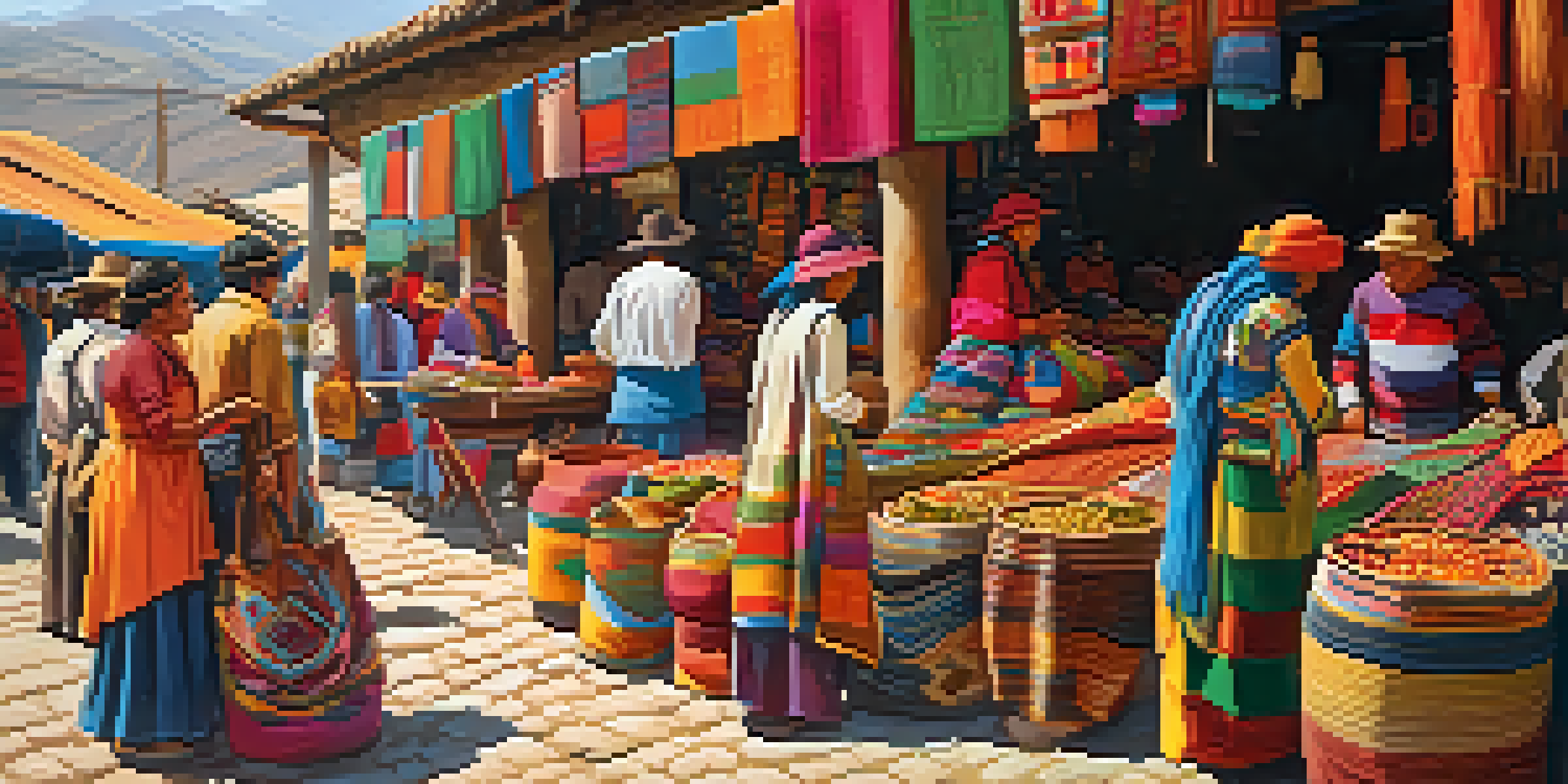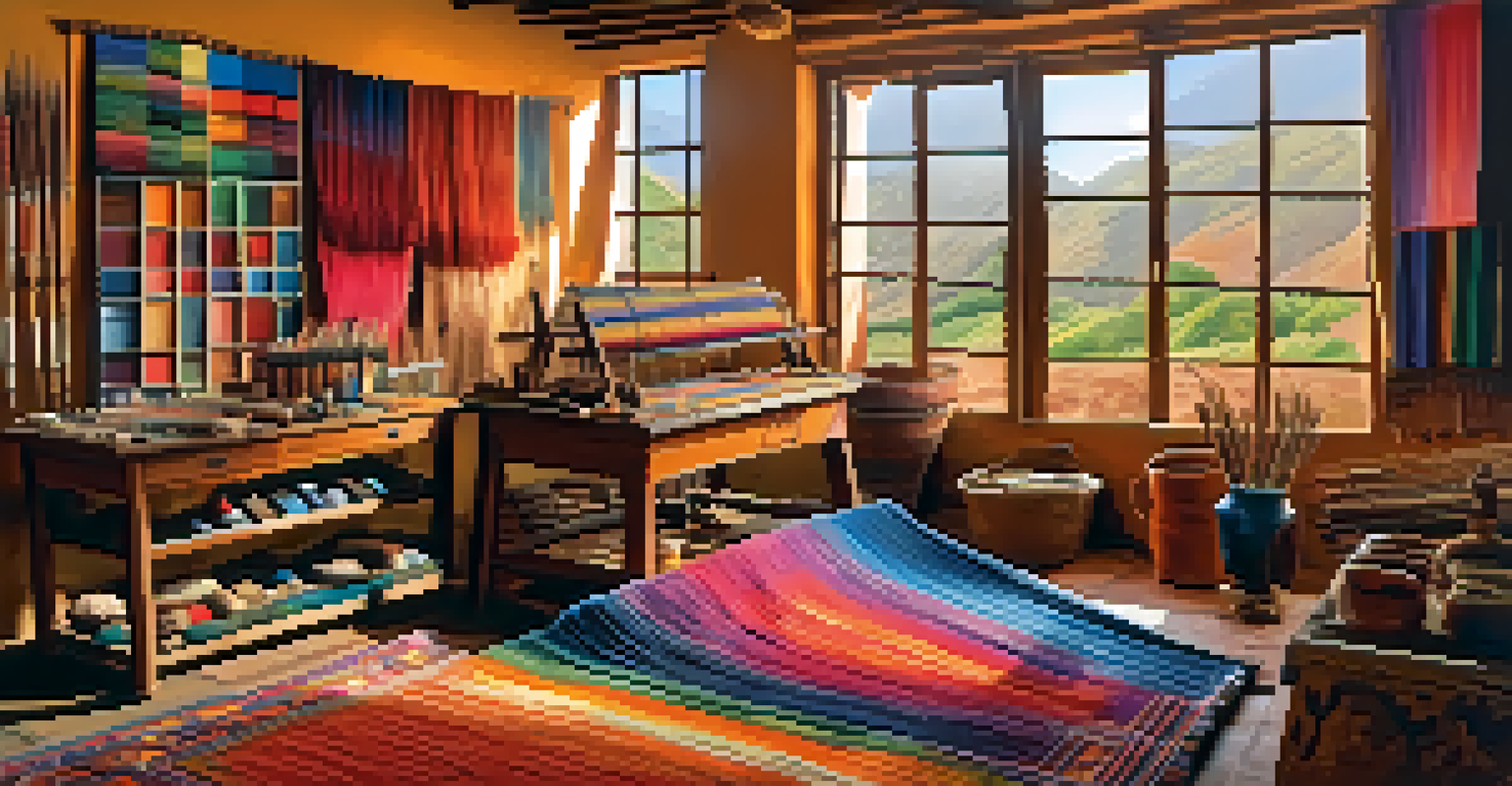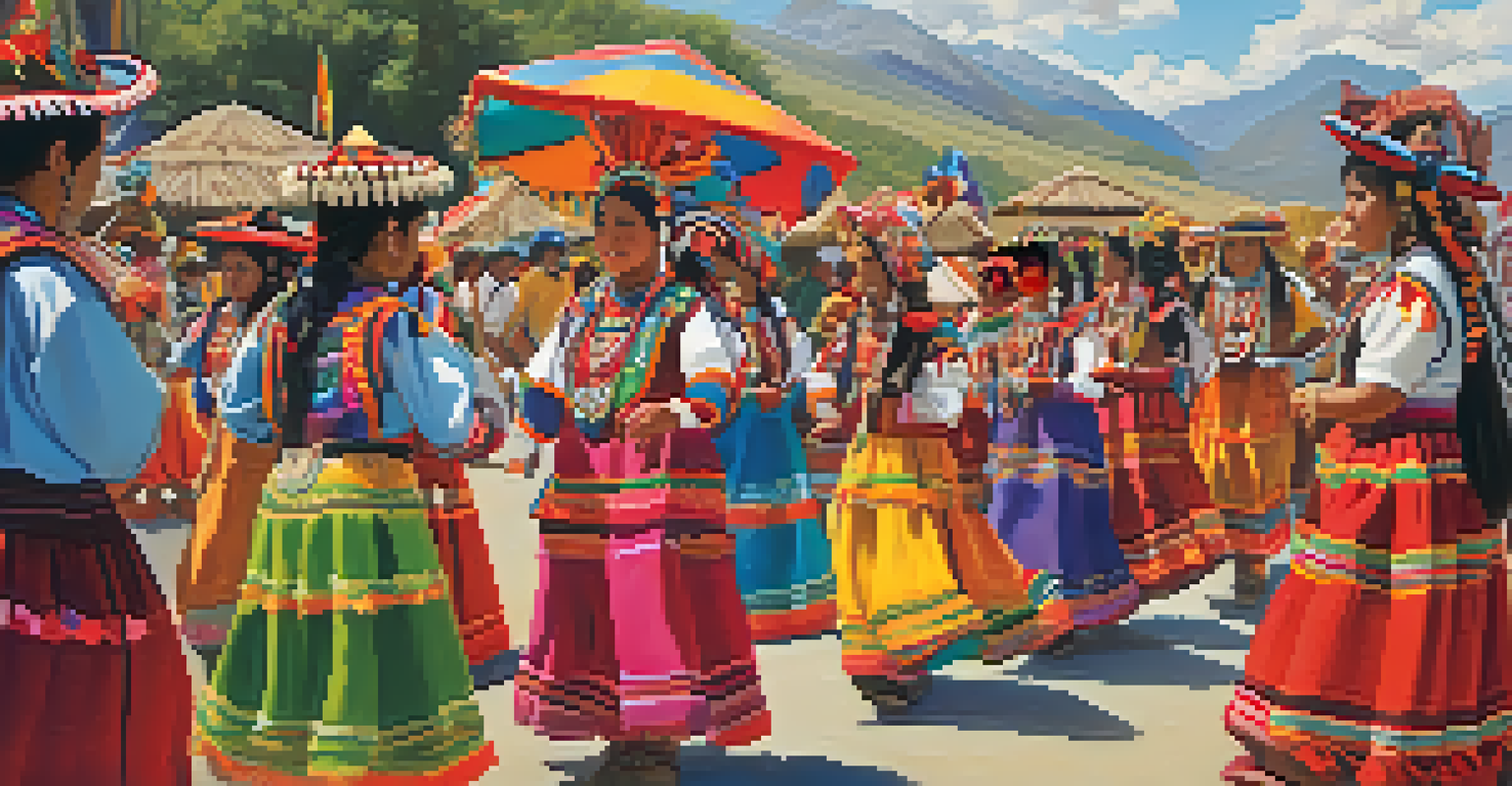The Influence of Indigenous Cultures on Peruvian Art Today

Roots of Peruvian Art: A Blend of Cultures
Peruvian art is a vibrant tapestry woven from various cultural threads, with Indigenous influences at its core. These ancestral cultures laid the foundation for artistic expression that resonates today. From the intricate textiles of the Andes to the striking pottery of the coastal regions, each piece tells a story of heritage and identity.
Art is the most beautiful of all lies.
The fusion of Indigenous techniques with Spanish colonial styles resulted in a unique art form that reflects Peru's complex history. Artists have embraced these dual influences, creating works that honor both their Indigenous roots and colonial past. This blend not only enriches the artistic landscape but also fosters a deeper understanding of Peru's cultural evolution.
Contemporary artists often draw inspiration from traditional motifs and methods, breathing new life into age-old practices. By keeping these Indigenous traditions alive, they ensure that the voices of their ancestors continue to echo through their work. This connection to the past is essential for the ongoing narrative of Peruvian art.
Symbolism in Indigenous Art Forms
Indigenous art is rich in symbolism, with every color, pattern, and shape carrying a specific meaning. For instance, the use of vibrant colors in textiles often represents the natural world, reflecting the deep spiritual connection Indigenous people have with their environment. Such symbolism is not just decorative; it serves as a communication tool for cultural beliefs and values.

Artists today are increasingly incorporating these symbols into their work, breathing new life into traditional meanings. This revival of symbolism helps educate a broader audience about Indigenous cultures and their significance. As contemporary artists reinterpret these symbols, they also challenge stereotypes and promote cultural pride.
Cultural Fusion Shapes Peruvian Art
Peruvian art is a rich blend of Indigenous and Spanish influences, with contemporary artists honoring this dual heritage through their work.
By embracing and showcasing these symbols, artists are not only preserving their heritage but also making a statement about identity and belonging. This ongoing dialogue between the past and present is crucial in maintaining the relevance of Indigenous art in today’s cultural landscape.
The Role of Nature in Indigenous Art
Nature plays a pivotal role in Indigenous Peruvian art, influencing both themes and materials used. Many artworks depict landscapes, flora, and fauna, highlighting the connection between Indigenous peoples and their environment. This relationship is reflected in the intricate designs found in textiles, ceramics, and even in murals.
Culture is the widening of the mind and of the spirit.
Modern artists are continuing this tradition, often using natural materials sourced from their surroundings. For example, dyes derived from plants and minerals not only enhance the beauty of their work but also underscore the importance of sustainability. This approach not only pays homage to Indigenous practices but also addresses contemporary environmental concerns.
Through their art, these creators convey a profound respect for nature, encouraging viewers to appreciate and protect the environment. This message resonates strongly in today’s world, where ecological issues are at the forefront of global consciousness.
Modern Artists Reviving Indigenous Techniques
Many contemporary Peruvian artists are rediscovering and reviving traditional Indigenous techniques that had been overshadowed. By mastering these methods, they are able to create art that is not only visually stunning but also deeply rooted in cultural heritage. This revival serves a dual purpose: it preserves valuable knowledge and provides a platform for personal expression.
For instance, artists may engage in traditional weaving practices that have been passed down through generations, infusing their work with both skill and storytelling. This hands-on approach fosters a connection to their ancestors and emphasizes the importance of craftsmanship. The result is art that resonates with authenticity and meaning.
Symbolism Enhances Indigenous Art
Indigenous art features deep symbolism, where colors and patterns communicate cultural beliefs, thus fostering pride and understanding in contemporary contexts.
Moreover, this revival has sparked interest among younger generations, encouraging them to explore their roots and embrace their cultural identity. As these techniques gain recognition, they attract both local and international attention, showcasing the richness of Indigenous artistry.
Cultural Festivals: Celebrating Indigenous Heritage
Cultural festivals in Peru serve as vibrant showcases of Indigenous art and traditions. These events bring together artists, musicians, and dancers to celebrate their heritage while also engaging the wider community. Such festivals provide a platform for artists to share their work, connect with audiences, and foster a sense of pride in their culture.
During these gatherings, attendees can experience traditional crafts, music, and dance, all of which highlight the importance of Indigenous heritage. This immersive experience not only educates visitors about the significance of these art forms but also encourages appreciation for the diversity within Peruvian culture.
Additionally, these festivals have become a driving force for economic development, creating opportunities for artists to sell their work and gain recognition. The interplay between celebration and commerce helps to sustain these artistic traditions, ensuring they continue to thrive in modern society.
Collaborations Between Indigenous and Contemporary Artists
Collaborations between Indigenous and contemporary artists have become increasingly common in Peru, resulting in innovative and impactful artworks. These partnerships create a fusion of perspectives, blending traditional techniques with modern ideas. The outcome is a rich dialogue that pushes the boundaries of artistic expression while honoring cultural heritage.
Such collaborations also provide a platform for Indigenous voices to be heard in the contemporary art scene. By working alongside established artists, they gain visibility and recognition, which is vital for preserving their narratives. This exchange fosters mutual respect and understanding, bridging gaps between generations and cultures.
Nature's Influence in Artistry
Nature significantly impacts Indigenous Peruvian art, with artists using local materials and themes to promote sustainability and environmental appreciation.
Moreover, these partnerships often address social issues, using art as a means of advocacy. Together, artists can tackle themes such as identity, environmental concerns, and cultural preservation, creating works that resonate with both local and global audiences. This synergy is not only beneficial for the artists involved but also enriches the cultural fabric of Peru.
The Future of Peruvian Art and Indigenous Influences
As we look to the future, the influence of Indigenous cultures on Peruvian art remains strong and ever-evolving. With a growing appreciation for cultural diversity, artists are increasingly exploring their roots and incorporating traditional elements into their work. This trend not only preserves Indigenous heritage but also enriches the contemporary art scene.
Educational initiatives and community programs are playing a crucial role in fostering this connection between past and present. By engaging younger generations, artists are ensuring that Indigenous techniques and stories are passed down, creating a vibrant future for Peruvian art. This emphasis on education helps cultivate a sense of pride and responsibility towards cultural heritage.

Ultimately, the ongoing dialogue between Indigenous traditions and contemporary art will shape the future landscape of Peruvian artistry. As artists continue to innovate while honoring their roots, they will pave the way for a rich, diverse, and inclusive artistic expression that reflects the complexities of Peru's identity.